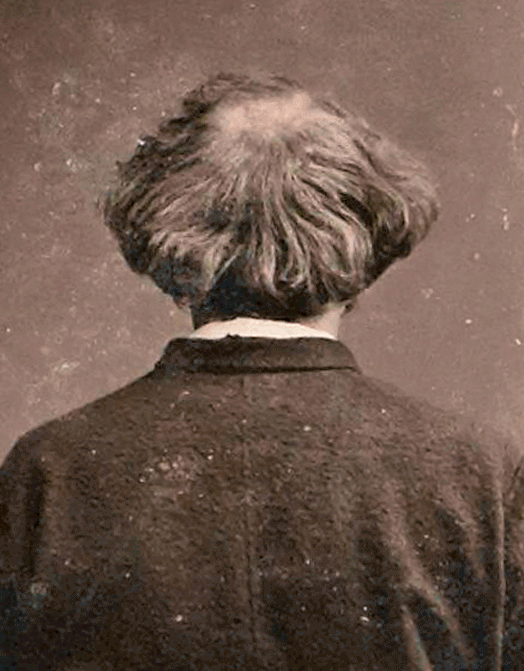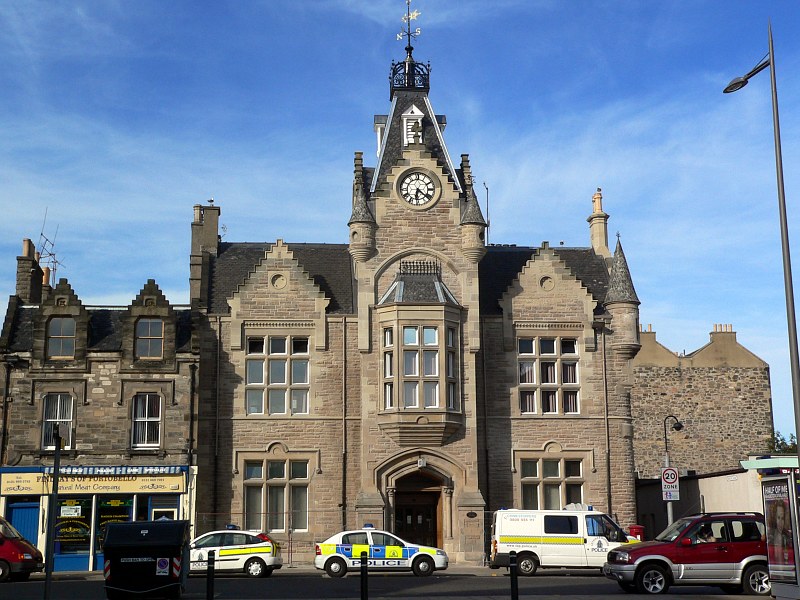|
Daniel Dunglas Home
Daniel Dunglas Home (pronounced ''Hume''; 20 March 183321 June 1886) was a Scottish physical medium with the reported ability to levitate to a variety of heights, speak with the dead, and to produce rapping and knocks in houses at will. His biographer Peter Lamont opines that he was one of the most famous men of his era. Harry Houdini described him as "one of the most conspicuous and lauded of his type and generation" and "the forerunner of the mediums whose forte is fleecing by presuming on the credulity of the public." Home conducted hundreds of séances, which were attended by many eminent Victorians. There have been eyewitness accounts by séance sitters describing conjuring methods and fraud that Home may have employed. Frederick Merrifield. (1903). ''A Sitting With D. D. Home''. Journal of the Society for Psychical Research 11: 76–80. Quoted in Joseph McCabe. (1920). ''Spiritualism: A Popular History from 1847''. Dodd, Mead and Company. pp. 110-112. A Mr. Merrifield was ... [...More Info...] [...Related Items...] OR: [Wikipedia] [Google] [Baidu] |
Nadar (photographer)
Gaspard-Félix Tournachon (5 April 1820 – 20 March 1910), known by the pseudonym Nadar, was a French photographer, caricaturist, journalist, novelist, balloonist, and proponent of heavier-than-air flight. In 1858, he became the first person to take aerial photographs. Photographic portraits by Nadar are held by many of the great national collections of photographs. His son, Paul Nadar (1856–1939), continued the studio after his death. Life Gaspard-Félix Tournachon (also known as Nadar) was born in early April 1820 in Paris, though some sources state he was born in Lyon. His father, Victor Tournachon, was a printer and bookseller. Nadar began to study medicine but quit for economic reasons after his father's death. Nadar started working as a caricaturist and novelist for various newspapers. He fell in with the Parisian bohemian group of Gérard de Nerval, Charles Baudelaire, and Théodore de Banville. His friends picked a nickname for him, perhaps by a playful habit of ad ... [...More Info...] [...Related Items...] OR: [Wikipedia] [Google] [Baidu] |
Gordon Stein
Gordon Stein (April 30, 1941 – August 27, 1996) was an American author, physiologist, and activist for atheism and religious skepticism. Biography Stein was born in New York to Jewish parents, and from an early age took an interest in science. He earned degrees in psychology and zoology, a doctorate in physiology from Ohio State University and master's degrees in Management and Library Science from University of Rochester, Adelphi College, and the University of California at Los Angeles. He was an author of books for secular humanist and rationalist publications, he also was a critic of claims of paranormal phenomena. Stein was an outspoken atheist and publicly debated Christian apologists such as Greg Bahnsen. He served as editor of the '' American Rationalist'' and was the librarian of the Center for Inquiry, which houses both the Committee for the Scientific Investigation of Claims of the Paranormal (CSICOP) and the Council for Secular Humanism (CSH). Stein died of lung c ... [...More Info...] [...Related Items...] OR: [Wikipedia] [Google] [Baidu] |
Norwich, Connecticut
Norwich ( ) (also called "The Rose of New England") is a city in New London County, Connecticut, United States. The Yantic, Shetucket, and Quinebaug Rivers flow into the city and form its harbor, from which the Thames River flows south to Long Island Sound. The population was 40,125 at the 2020 United States Census. History The town of Norwich was founded on the site of what is now Norwichtown in 1659 by settlers from Saybrook Colony led by Major John Mason and James Fitch. They purchased the land "nine miles square" that became Norwich from Mohegan Sachem Uncas. One of the co-founders of Norwich was Thomas Leffingwell who rescued Uncas when surrounded by his Narragansett enemies, and whose son established the Leffingwell Inn. In 1668, a wharf was established at Yantic Cove. Settlement was primarily in the area around the Norwichtown Green. The 69 founding families soon divided up the land in the Norwichtown vicinity for farms and businesses. By 1694, the public landing bu ... [...More Info...] [...Related Items...] OR: [Wikipedia] [Google] [Baidu] |
Neighborhoods Of Norwich, Connecticut
Several neighborhoods of Norwich, Connecticut maintain independent identities and are recognized by official signs marking their boundaries. The following is a list of neighborhoods in Norwich. Bean Hill Bean Hill was originally a separate village, located about a mile from the center of Norwich in close proximity to the Norwichtown Green. It was founded by a group of Episcopalians around a small green (now a public park). In the early 19th century it was the site of the Norwich Methodist Episcopal Church, which met in a building that also housed a classical academy and a free school.Excerpt from ''David Ruggles: A Radical Black Abolitionist and the Underground Railroad in New York City'' by Graham Hodges '' ... [...More Info...] [...Related Items...] OR: [Wikipedia] [Google] [Baidu] |
Steerage
Steerage is a term for the lowest category of passenger accommodation in a ship. In the nineteenth and early twentieth century considerable numbers of persons travelled from their homeland to seek a new life elsewhere, in many cases North America and Australia. Many of those people were destitute in their homeland and had the minimum of resources to procure transportation. The term later widened to imply the lowest category of accommodation on a passenger vessel. Steerage class travel Steerage refers to the lowest possible category of long-distance steamer travel. It was available to very poor people, usually emigrants seeking a new life in the New World, chiefly North America and Australia. In many cases these people had no financial resources and were attempting to escape destitution at home. Consequently they needed transportation at an absolute minimum cost. In many cases they provided their own bedding and food. Steerage was very cramped and there was hardly any room for fres ... [...More Info...] [...Related Items...] OR: [Wikipedia] [Google] [Baidu] |
Linlithgow
Linlithgow (; gd, Gleann Iucha, sco, Lithgae) is a town in West Lothian, Scotland. It was historically West Lothian's county town, reflected in the county's historical name of Linlithgowshire. An ancient town, it lies in the Central Belt on an historic route between Edinburgh and Falkirk beside Linlithgow Loch. The town is situated approximately 20 miles (32 km) west of Edinburgh. During the medieval period, the town grew in prominence as a royal burgh and residence around Linlithgow Palace. In later centuries, Linlithgow became a centre of industry in leather making and other materials, before developing rapidly in the Victorian era with the opening of the Union Canal in the 1820s and the arrival of the railway in 1842. Linlithgow was the former county town of the county but the Council now resides in nearby Livingston. Today Linlithgow has less industry and the economy of the town centre is focused on hospitality, heritage and tourism services. Linlithgow's patron saint is ... [...More Info...] [...Related Items...] OR: [Wikipedia] [Google] [Baidu] |
Portobello, Edinburgh
Portobello is a coastal suburb of Edinburgh in eastern central Scotland. It lies 3 miles (5 km) east of the city centre, facing the Firth of Forth, between the suburbs of Joppa, Edinburgh, Joppa and Craigentinny. Although historically it was a town in its own right, it is officially a residential Areas of Edinburgh, suburb of Edinburgh. The promenade fronts onto a wide sandy beach. History Early years The area was originally known as Figgate Muir, an expanse of moorland through which the Figgate Burn flowed, from Duddingston Loch fed by the Braid Burn to the west, to the sea, with a broad sandy beach on the Firth of Forth. The name "Figgate" has been thought to come from an Old English term for "cow's ditch", but the land was used as pasture for cattle by the monks of Holyrood Abbey and the name is more likely to mean "cow road", as in Cowgate in Edinburgh. In 1650 it was the supposed scene of a secret meeting between Oliver Cromwell and Scottish leaders. A report from 16 ... [...More Info...] [...Related Items...] OR: [Wikipedia] [Google] [Baidu] |
Greenland
Greenland ( kl, Kalaallit Nunaat, ; da, Grønland, ) is an island country in North America that is part of the Kingdom of Denmark. It is located between the Arctic and Atlantic oceans, east of the Canadian Arctic Archipelago. Greenland is the world's largest island. It is one of three constituent countries that form the Kingdom of Denmark, along with Denmark and the Faroe Islands; the citizens of these countries are all citizens of Denmark and the European Union. Greenland's capital is Nuuk. Though a part of the continent of North America, Greenland has been politically and culturally associated with Europe (specifically Norway and Denmark, the colonial powers) for more than a millennium, beginning in 986.The Fate of Greenland's Vikings , by Dale Mackenzie Brown, ''Archaeological Institute of America'', ... [...More Info...] [...Related Items...] OR: [Wikipedia] [Google] [Baidu] |





